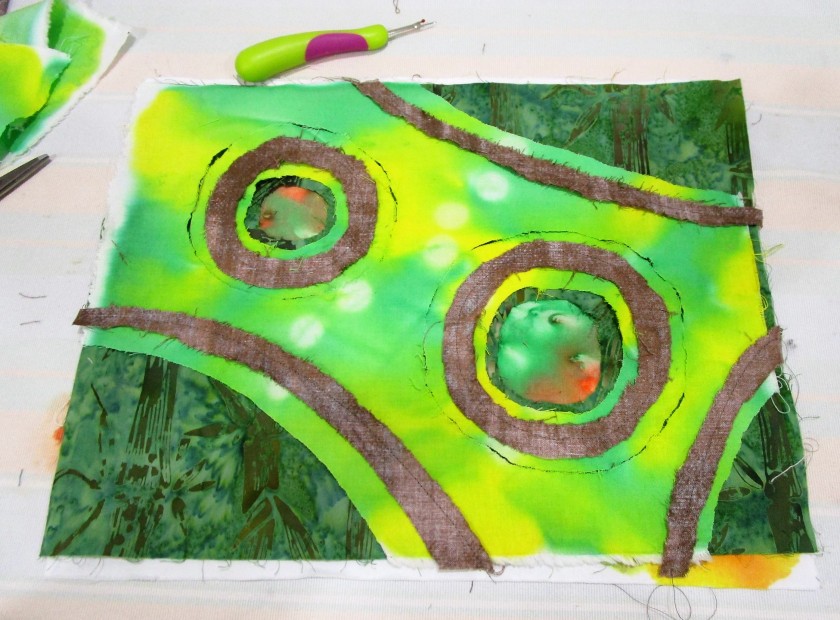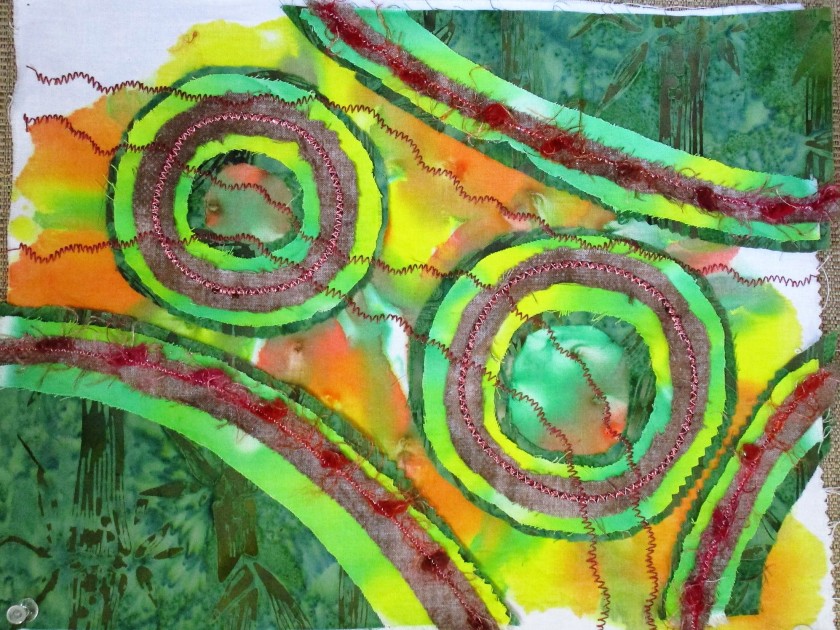
This elaborately embroidered art quilt is not mine. It was made by my mother Jackie – one of the last pieces she worked on before being abruptly retired from sewing by a stroke last January. Her right side and her speech functions were seriously impacted. Recovery has been slow in coming.

This quilt is so dense with embroidery that it is stiff and heavy from the massive about of thread added. She completed it all but the binding. Now our mother cannot tell me or my sisters anything about the pattern, materials, or work involved. We know only that it was embroidered on the Baby Lock Destiny II.
So that it can be used by one of my sisters, I volunteered to add the binding.
I thought that it would be a simple matter to match the green, but it was not. Eventually I chose a Moda fabric in color Emerald.

It reminded me of a prom dress I made for myself. The skirt was sewn from satin in a shade just about this color. Working on this binding gave me a flash-back to my then-boyfriend and the moment we posed for a photograph at the dance – I think it was sometime around 1969. I seem to have lost the photo.
Actually, sewing this binding on took all my concentration. With all that weight and stiffness, the quilt resisted my efforts to manipulate it through the machine. It felt like I was arm-wrestling a tent.
Finally finished.


I guess the color is a good match.
I wish I could tell my mother about it. At least I will send her a photograph. Perhaps seeing it will stimulate her brain to remember making it.
The quilt itself will go to my younger sister.





















